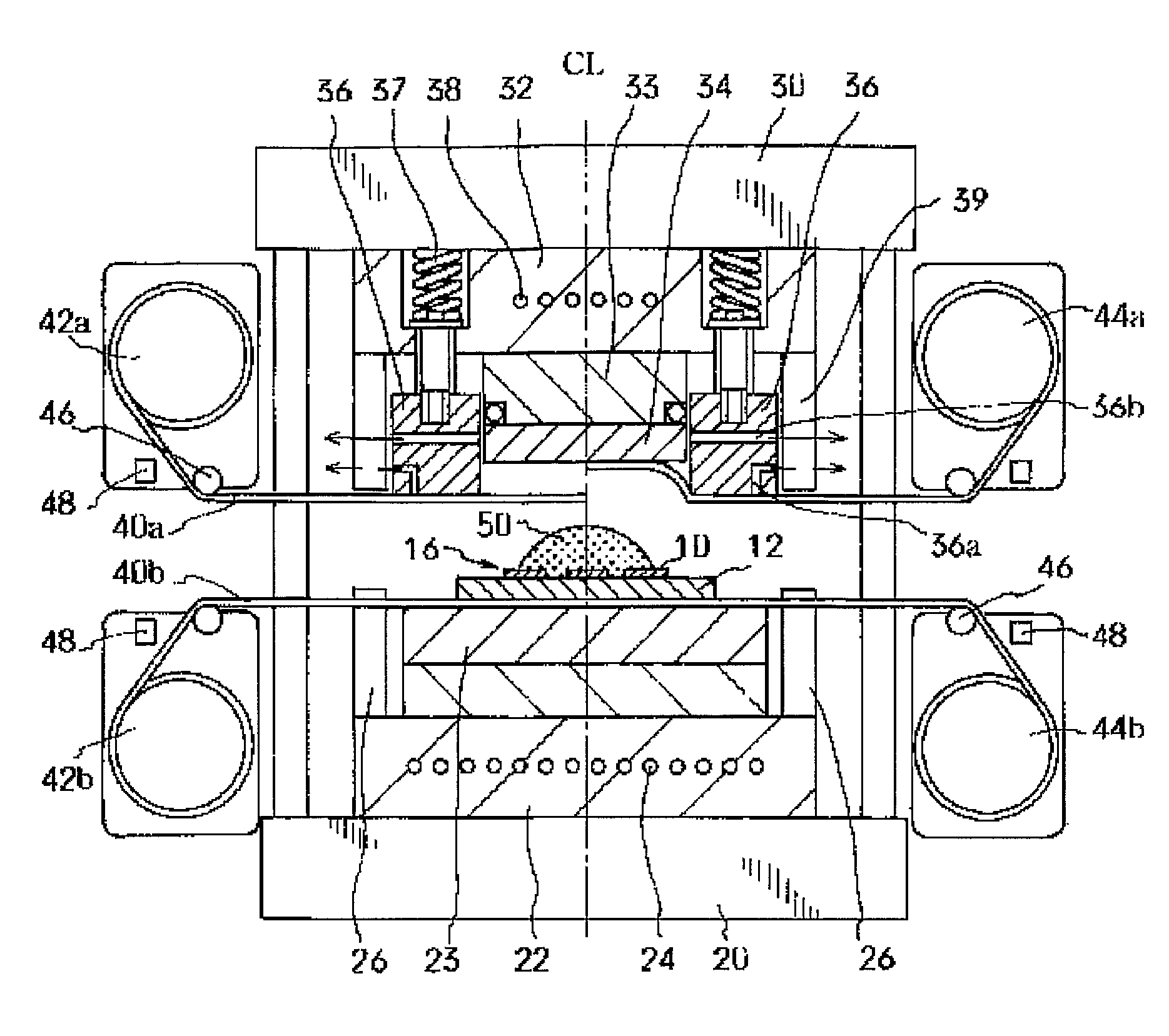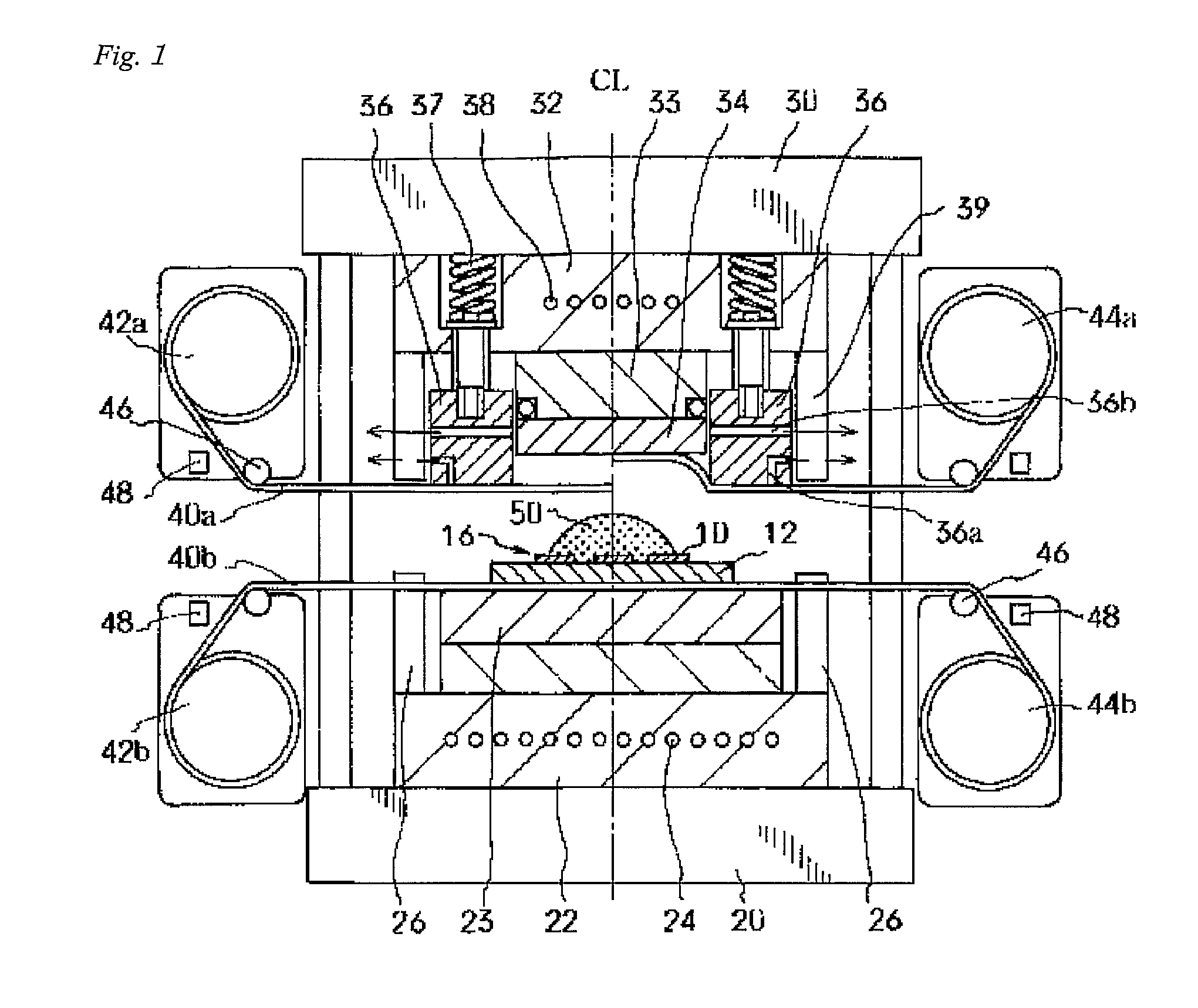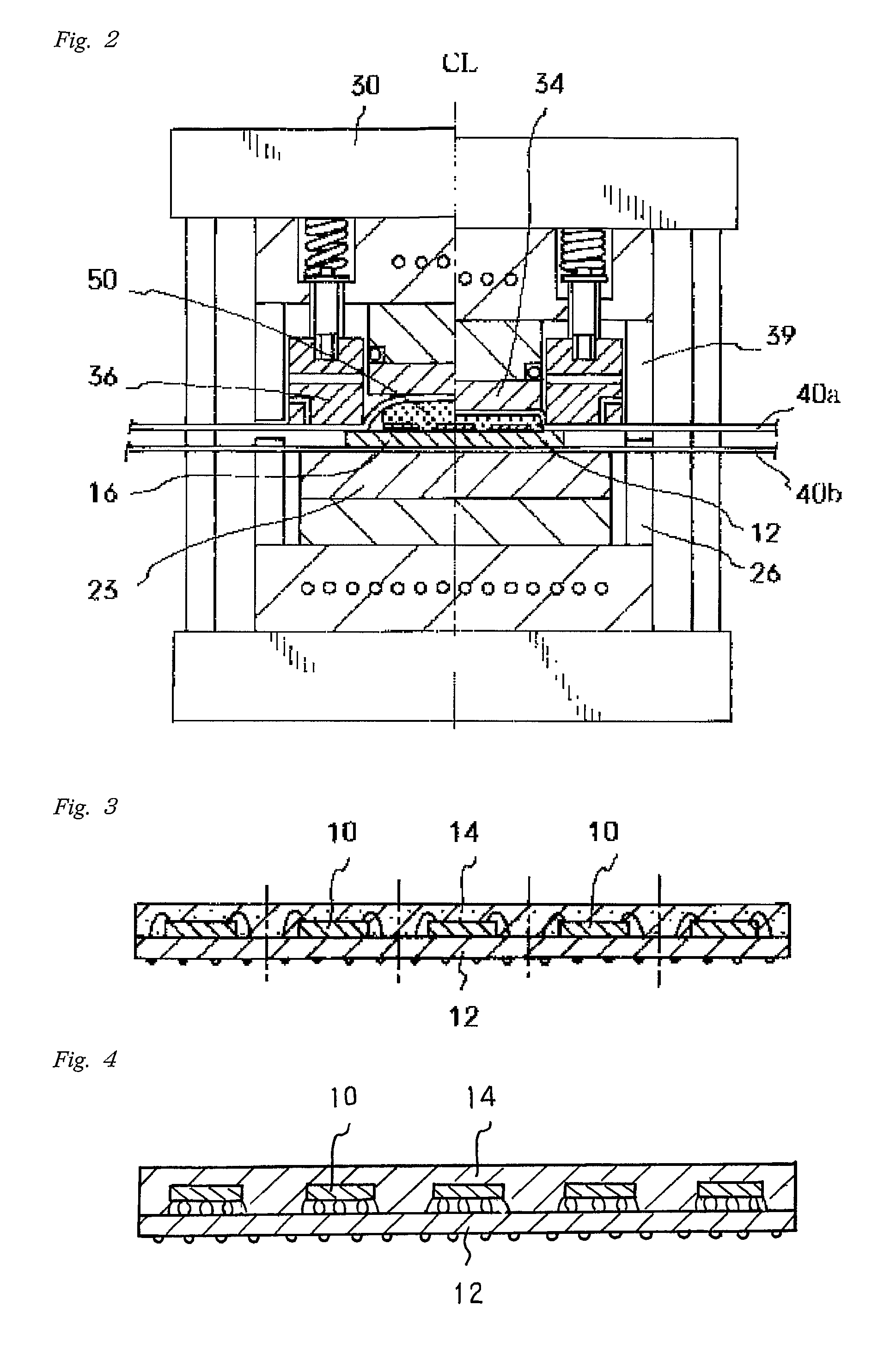Semiconductor device and method of manufacturing thereof
a semiconductor and printed circuit board technology, applied in semiconductor devices, solid-state devices, basic electric elements, etc., can solve the problems of forming voids, affecting the quality of semiconductor chips, so as to reduce the warping of semiconductor chips and printed circuit boards, and reduce the effect of manufacturing efficiency
- Summary
- Abstract
- Description
- Claims
- Application Information
AI Technical Summary
Benefits of technology
Problems solved by technology
Method used
Image
Examples
example 1
Practical Example 1
[0114]In the present practical example, a semiconductor device of the type shown in FIG. 3 was used. More specifically, (8 mm×14 mm) semiconductor chips were fixed to a (70 mm×160 mm) polyimide-resin printed-circuit board via a 35 μm-thick epoxy-resin die-bond agent layer. The printed-circuit board was comprised of a laminated structure formed by applying an 18 μm-thick copper foil via an epoxy-resin adhesive layer having a 17 μm thickness onto one side of a 75 μm-thick polyimide resin film. Circuit patterns were then made from the aforementioned foil. Portions required for wire bonding of the circuit patterns were removed, and the surface of the printed-circuit board was coated with a photosensitive solder mask. The circuit patterns and chip bumps of the semiconductor devices were electrically interconnected and wire bonded via 48 gold bonding wires. In total, 54 semiconductor chips divided into 3 blocks of 18 chips in each were secured to the printed-circuit boa...
example 2
Practical Example 2
[0116]A semiconductor device was prepared in the same manner as in Practical Example 1 with the exception that a silicone rubber composition (II) prepared by mixing in a 1:1 weight ratio the liquid A and the liquid B of a two-liquid type silicone rubber composition having components shown in Table 1 was used instead of the silicone rubber composition (I). Characteristics of the obtained semiconductor device are shown in Table 4.
[0117]
TABLE 1Example No.Practical Example 1Practical Example 2ComponentsIIISilicone Rubber CompositionLiquid ALiquid BLiquid ALiquid BCompositionOrganopolysiloxane (A-1)(parts by weight)5.763.03.3Organopolysiloxane (A-3)(parts by weight)——99Organopolysiloxane (A-4)(parts by weight)18.814 12.57.7Organopolysiloxane (B-1)(parts by weight)—3—3Platinum-type Catalyst (C-1)(ppm*)20—20—Filler (D-1)(parts by weight)6868 6868Filler (D-2)(parts by weight)77——Filler (D-3)(parts by weight)——77Adhesion Promoter(parts by weight)—2—2Pigment(parts by weight...
example 3
Practical Example 3
[0118]A semiconductor device was prepared in the same manner as in Practical Example 1 with the exception that a one-liquid type silicone rubber composition (III) having components shown in Table 2 was used instead of the silicone rubber composition (I) and that after compression molding for 4 minutes at 120° C. and a pressure of 50 kgf / cm2 the product was further heat treated in an oven for 1 hour at 120° C. Characteristics of the obtained semiconductor device are shown in Table 4.
PUM
| Property | Measurement | Unit |
|---|---|---|
| thickness | aaaaa | aaaaa |
| viscosity | aaaaa | aaaaa |
| viscosity | aaaaa | aaaaa |
Abstract
Description
Claims
Application Information
 Login to View More
Login to View More - R&D
- Intellectual Property
- Life Sciences
- Materials
- Tech Scout
- Unparalleled Data Quality
- Higher Quality Content
- 60% Fewer Hallucinations
Browse by: Latest US Patents, China's latest patents, Technical Efficacy Thesaurus, Application Domain, Technology Topic, Popular Technical Reports.
© 2025 PatSnap. All rights reserved.Legal|Privacy policy|Modern Slavery Act Transparency Statement|Sitemap|About US| Contact US: help@patsnap.com



